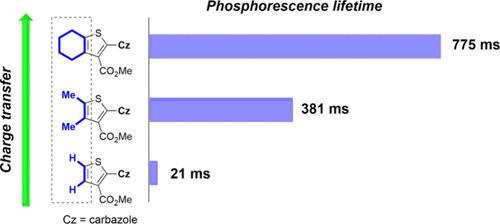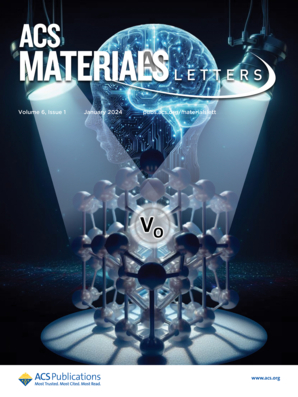Tailoring Emission Lifetime for Dopant-Induced Phosphorescence
IF 8.7
1区 化学
Q1 MATERIALS SCIENCE, MULTIDISCIPLINARY
引用次数: 0
Abstract
Despite phosphorescent materials having found wide application in optoelectronic and biological areas, the mechanistic understanding of ultralong room temperature phosphorescence (RTP) from metal-free emitters is underdeveloped. Recently, an increasing number of reports have suggested that RTP from purely organic phosphorescent materials requires the presence of trace impurities or dopants in the bulk emitter. Contributing to a better understanding of mechanistic aspects, we demonstrate that the RTP lifetime is directly proportional to intermolecular charge transfer (CT) properties of the crystalline bulk emitter. Given that the CT efficiency is contingent on crystal packing arrangement, variations of interemitter distances in the crystal lattice by modulating sterics of the emitter core structure represent an efficient means to manipulate the dopant-induced RTP lifetime. The versatility of the “steric modulation” approach has been demonstrated in two different dopant/emitter systems. A 38-fold increase (from 21 to 775 ms) was observed in the RTP lifetime of benzo[b]carbazole-doped carbazole-containing materials.

定制掺杂剂诱导磷光的发射寿命
尽管磷光材料已在光电和生物领域得到广泛应用,但人们对无金属发射体的超长室温磷光(RTP)的机理认识仍不充分。最近,越来越多的报告指出,纯有机磷光材料的 RTP 需要发光体中存在痕量杂质或掺杂剂。为了加深对机理方面的理解,我们证明了 RTP 寿命与晶体块状发射体的分子间电荷转移(CT)特性成正比。鉴于 CT 效率取决于晶体的堆积排列,通过调节发射极核心结构的立体性来改变晶格中发射极间的距离,是操纵掺杂剂诱导的 RTP 寿命的有效方法。立体调制 "方法的多功能性已在两种不同的掺杂剂/发射器系统中得到证实。掺杂苯并[b]咔唑的含咔唑材料的 RTP 寿命增加了 38 倍(从 21 毫秒到 775 毫秒)。
本文章由计算机程序翻译,如有差异,请以英文原文为准。
求助全文
约1分钟内获得全文
求助全文
来源期刊

ACS Materials Letters
MATERIALS SCIENCE, MULTIDISCIPLINARY-
CiteScore
14.60
自引率
3.50%
发文量
261
期刊介绍:
ACS Materials Letters is a journal that publishes high-quality and urgent papers at the forefront of fundamental and applied research in the field of materials science. It aims to bridge the gap between materials and other disciplines such as chemistry, engineering, and biology. The journal encourages multidisciplinary and innovative research that addresses global challenges. Papers submitted to ACS Materials Letters should clearly demonstrate the need for rapid disclosure of key results. The journal is interested in various areas including the design, synthesis, characterization, and evaluation of emerging materials, understanding the relationships between structure, property, and performance, as well as developing materials for applications in energy, environment, biomedical, electronics, and catalysis. The journal has a 2-year impact factor of 11.4 and is dedicated to publishing transformative materials research with fast processing times. The editors and staff of ACS Materials Letters actively participate in major scientific conferences and engage closely with readers and authors. The journal also maintains an active presence on social media to provide authors with greater visibility.
 求助内容:
求助内容: 应助结果提醒方式:
应助结果提醒方式:


